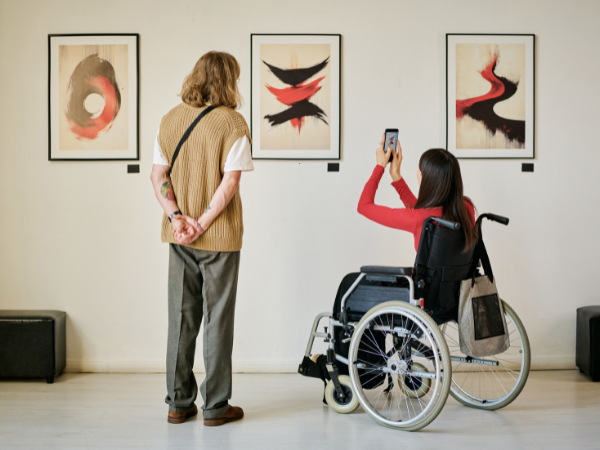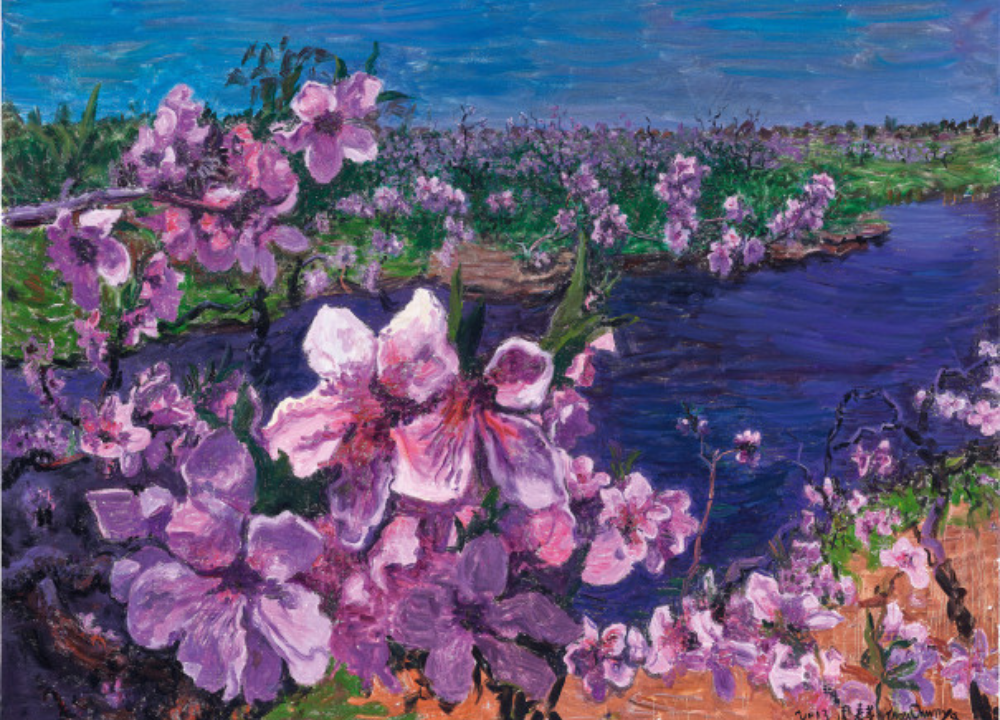Knowing how to spot these hidden gems can change the way you experience art forever. You’ll discover simple tips that sharpen your attention and unlock the mysteries behind some of the world’s most celebrated artworks. Get ready to see your favorite masterpieces in a whole new light!
Masterpieces That Hide Secrets
Many famous artworks hold secrets beneath their surface. These masterpieces often contain hidden details that reveal stories, symbols, or messages. Finding these secrets makes the artwork more interesting. It shows the artist’s skill and creativity.
Famous Paintings With Hidden Elements
Several well-known paintings include hidden elements that are not obvious at first glance. These secret details can be symbols, faces, or objects painted subtly within the artwork. Here are some famous examples:
- Leonardo da Vinci’s “The Last Supper”– Some believe the positioning of the apostles forms secret codes or messages.
- Jan van Eyck’s “The Arnolfini Portrait”– Contains tiny reflections and symbols in the mirror that reveal more about the scene.
- Michelangelo’s Sistine Chapel Ceiling– Includes hidden faces and shapes within the frescoes, representing deeper meanings.
- Hieronymus Bosch’s “The Garden of Earthly Delights”– Filled with strange and symbolic creatures that tell a story beyond the surface.
These hidden details can change how we understand the painting. They invite viewers to explore carefully, making art more exciting.
Reasons Artists Conceal Details
Artists add hidden details for many reasons. Sometimes these secrets show personal ideas or beliefs. Other times, they protect messages that could be dangerous or controversial.
Artists may conceal details to:
- Express Hidden Meanings: Symbols or signs can represent ideas not obvious to all viewers.
- Challenge Viewers: Hidden elements invite viewers to look closer and think deeply.
- Protect Messages: In some times, certain ideas had to be secret to avoid punishment.
- Show Skill: Adding tiny, detailed elements shows the artist’s talent and patience.
Some artists also used hidden details as a form of fun or mystery. It creates a connection between the artist and the audience. Discovering these secrets feels like solving a puzzle.
Techniques To Reveal Hidden Details
Famous masterpieces often hold secrets beyond their surface beauty. Techniques to reveal hidden details help viewers discover these subtle elements. These methods deepen appreciation and understanding of the artwork.
Close Observation Tips
Careful and patient observation is the first step to spot hidden details. Avoid rushing. Spend time looking at small sections of the artwork. Use a magnifying glass to see fine lines and textures. Notice colors, shapes, and patterns that repeat or stand out.
- Focus on edges and corners where artists often hide symbols or small figures.
- Look for contrasts between bright and dark areas; this can reveal subtle forms.
- Examine the background carefully; it may contain hidden images or messages.
Write down or sketch what you notice to compare details later. Observing from different distances also helps. Step back for the overall view, then move closer for intricate parts.
Using Light And Shadow
Light plays a big role in revealing hidden details. Changing the angle or strength of light can expose textures and shapes. Shadows create depth and highlight subtle parts of a painting. Use a focused light source like a flashlight to scan the surface slowly.
Try these steps:
- Shine light from different angles to see how shadows move.
- Notice areas that appear flat or raised under different lighting.
- Observe how colors change with light intensity.
Some paintings have hidden layers only visible under special lighting. Raking light (light at a low angle) reveals cracks and brush strokes. Ultraviolet light shows restorations or hidden drawings beneath the paint. These lighting methods uncover parts the artist painted over or altered.
Digital Tools For Analysis
Technology makes it easier to find hidden elements in art. Digital tools enhance images and reveal details that the eye can miss. High-resolution photos let you zoom in without losing quality. Image editing software adjusts contrast and brightness to highlight faint parts.
Common digital tools include:
- Photo Editing Software: Programs like Photoshop or GIMP help adjust colors and layers.
- Image Stacking: Combining multiple photos to increase clarity and reduce noise.
- Infrared and X-ray Imaging: Shows underpaintings and changes made by the artist.
Many museums share digital images of masterpieces online. Use these to explore artworks on your device. Software filters can detect hidden brush strokes, signatures, or erased elements. Digital analysis is a powerful aid for both casual viewers and experts.
Symbolism In Art
Symbolism in art reveals deeper meanings behind famous masterpieces. Artists use symbols to express ideas, emotions, and stories without words. These symbols often hide in plain sight, inviting viewers to explore beyond the surface.
Common Symbols And Their Meanings
Many symbols appear often in famous artworks. Knowing their meanings helps identify hidden details quickly. Here are some common symbols and what they usually represent:
- Skull: Reminds us of death and the fleeting nature of life.
- Flower: Often shows beauty, purity, or the passage of time.
- Light and shadow: Symbolize good and evil or knowledge and ignorance.
- Birds:vCan mean freedom, the soul, or a message from the divine.
- Water: Represents life, change, or cleansing.
Here is a table with more symbols and their common meanings:
| Symbol | Meaning |
|---|---|
| Apple | Temptation, knowledge, or sin |
| Snake | Danger, evil, or rebirth |
| Crown | Power, authority, or victory |
| Mirror | Truth, vanity, or self-reflection |
| Hourglass | Time passing, mortality |
Artists combine symbols to tell complex stories. Spotting these details helps you understand the painting’s full meaning.
Cultural Contexts Behind Symbols
Symbols often change meaning depending on the culture and time period of the artwork. A symbol in one place may have a different meaning in another. Understanding the cultural context is key to decoding these hidden messages.
For example, the color white in Western art often means purity or innocence. In some Eastern cultures, it can represent mourning or death. Religious beliefs also influence symbolism:
- Christian art uses the lamb to symbolize Jesus and sacrifice.
- In ancient Egyptian art, the scarab beetle stands for rebirth and protection.
- Hindu art features the lotus flower as a symbol of spiritual growth.
Consider historical events, religion, and traditions tied to the artwork’s origin. These factors shape the symbols’ meanings and add depth to the piece.
Here is a simple guide to cultural symbol variations:
| Symbol | Western Meaning | Other Cultural Meaning |
|---|---|---|
| Dragon | Evil, danger | Strength, good fortune (Chinese culture) |
| Owl | Wisdom | Death or bad luck (some cultures) |
| Red Rose | Love and passion | Respect and honor (some Asian cultures) |
Knowing these cultural differences helps you spot hidden details and appreciate the artwork’s true meaning.
Case Studies Of Hidden Details
Spotting hidden details in famous masterpieces reveals the artist’s deeper messages and skills. Studying case studies helps uncover these secrets. These details often stay unnoticed at first glance but add rich meaning to the artwork.
Leonardo Da Vinci’s Subtle Elements
Leonardo da Vinci’s paintings contain many small but powerful details. These subtle elements often reveal his thoughts on science, nature, and human emotion.
- The Mona Lisa’s Smile: Her smile seems to change from different angles. This effect is due to Leonardo’s use of light and shadow, called sfumato.
- Hidden Landscapes: The background in many of his works shows mysterious landscapes with winding paths and distant mountains. These symbolize the journey of life.
- Unseen Symbols: In The Last Supper, the position of hands and objects has symbolic meaning. For example, the bread and wine hint at deeper religious themes.
Here is a simple table showing some subtle elements in his famous paintings:
| Painting | Hidden Detail | Meaning |
|---|---|---|
| The Mona Lisa | Changing smile | Human emotion and mystery |
| The Last Supper | Hand gestures | Religious symbolism |
| Virgin of the Rocks | Rocky background | Nature’s power and protection |
Leonardo’s art encourages viewers to look closely and think deeply about what they see. His details are subtle but carry strong messages.
Hidden Stories In Renaissance Art
Renaissance artists often included hidden stories in their paintings. These details tell about politics, religion, or personal life. They used symbols and small images to pass messages quietly.
Common hidden stories include:
- Religious Symbols: Angels, crosses, or animals represented faith and moral lessons.
- Political Messages: Portraits sometimes showed power or alliances through clothing or background elements.
- Personal Secrets: Some artists added small self-portraits or messages only close viewers might notice.
For example, Sandro Botticelli’s The Birth of Venushides symbols of love and beauty through the use of shells and flowers. These symbols connect to ancient myths.
Below is a list of common hidden symbols and their meanings in Renaissance art:
- Lilies: Purity and innocence
- Skulls: Reminder of life’s brevity
- Books: Knowledge and learning
- Dogs: Loyalty and protection
Understanding these symbols helps appreciate the story behind each painting. Renaissance art is full of layers, each telling a different part of the story.
Improving Your Art Observation Skills
Improving your art observation skills helps you see beyond the obvious. Famous masterpieces often hide small details that tell deeper stories. Training your eyes to notice these details makes your experience richer. It also helps you understand the artist’s message better.
Mindful Viewing Practices
Mindful viewing means paying full attention to the artwork without distractions. Start by choosing a quiet place to observe. Look at the whole painting first, then focus on smaller parts. Notice the use of light and shadow, which can highlight hidden elements.
Try these simple steps:
- Take your time: Spend at least 5 minutes on one painting.
- Use all senses: Imagine the sounds or smells that the artwork might suggest.
- Focus on details: Look for unusual shapes, symbols, or colors.
- Observe emotions: Note how the artwork makes you feel.
Here is a quick guide to mindful viewing:
| Step | What to Do | Why It Helps |
|---|---|---|
| 1 | Look at the whole artwork | Understand the general story or theme |
| 2 | Focus on one section | Notice details easily missed |
| 3 | Observe colors and shadows | Discover hidden shapes or meanings |
| 4 | Ask yourself questions | Engage your mind and memory |
Mindful viewing trains your brain to catch subtle details. Repeat this practice regularly to improve your skill.
Recording And Reflecting On Observations
Writing down what you see helps you remember and understand better. Keep a small notebook or digital document for your art observations. After viewing, write answers to simple questions:
- What caught your eye first?
- Did you find any symbols or unusual shapes?
- What emotions did the artwork create?
- Did you notice changes in color or light?
Record your thoughts clearly and briefly. Use bullet points or short sentences for quick notes. Reflecting on these notes later deepens your understanding.
Use the table below to organize your observations:
| Aspect | Observation | Possible Meaning |
|---|---|---|
| Colors | Warm tones in background | Suggests warmth or happiness |
| Shapes | Hidden faces in shadows | Symbolizes mystery or hidden truths |
| Light | Bright light on main figure | Focuses attention on subject |
Reflect on your notes by asking yourself what the artist might want to say. Return to the artwork after some days and compare your new thoughts with old ones. This habit builds stronger observation skills and helps spot hidden details in masterpieces.




